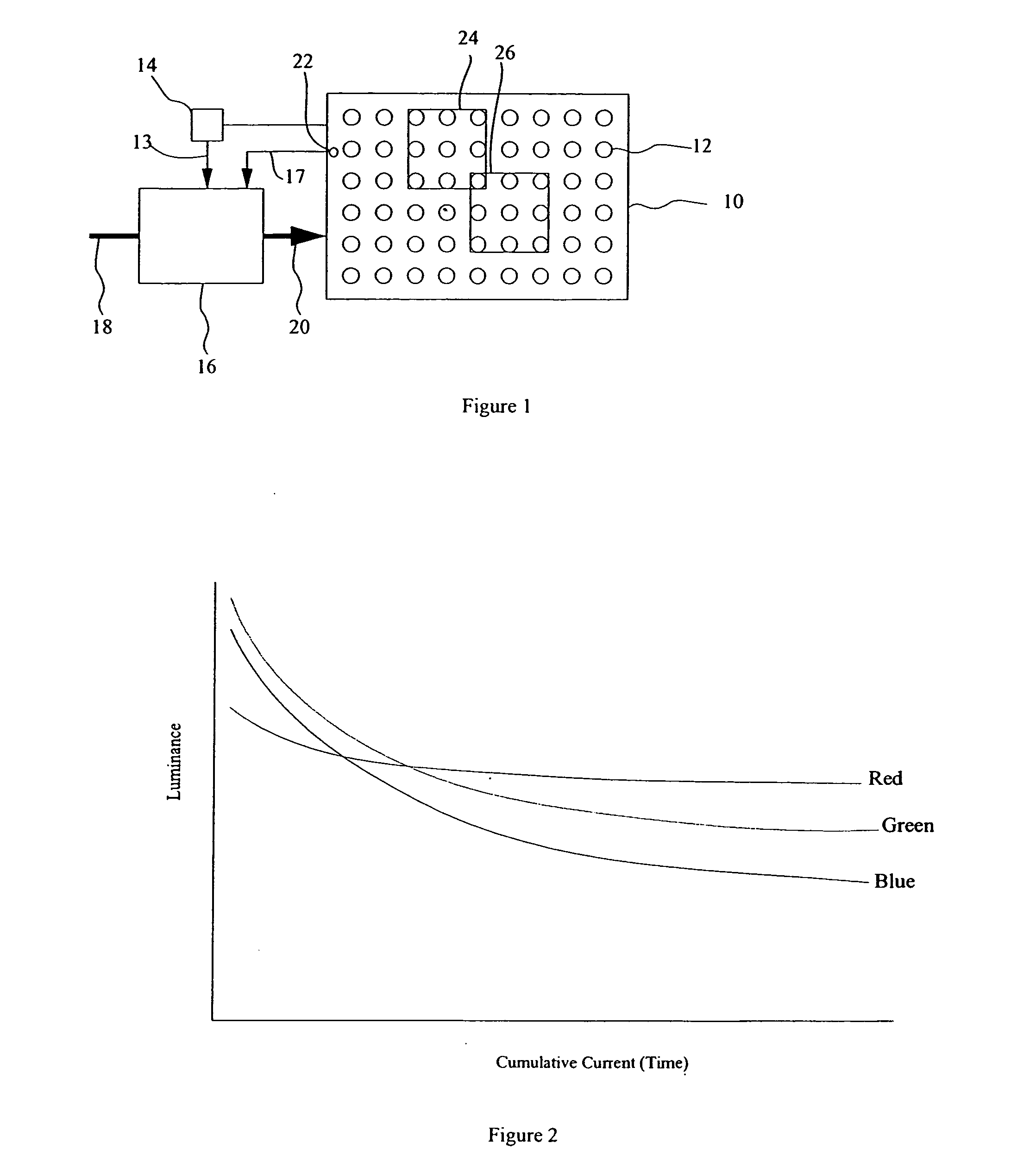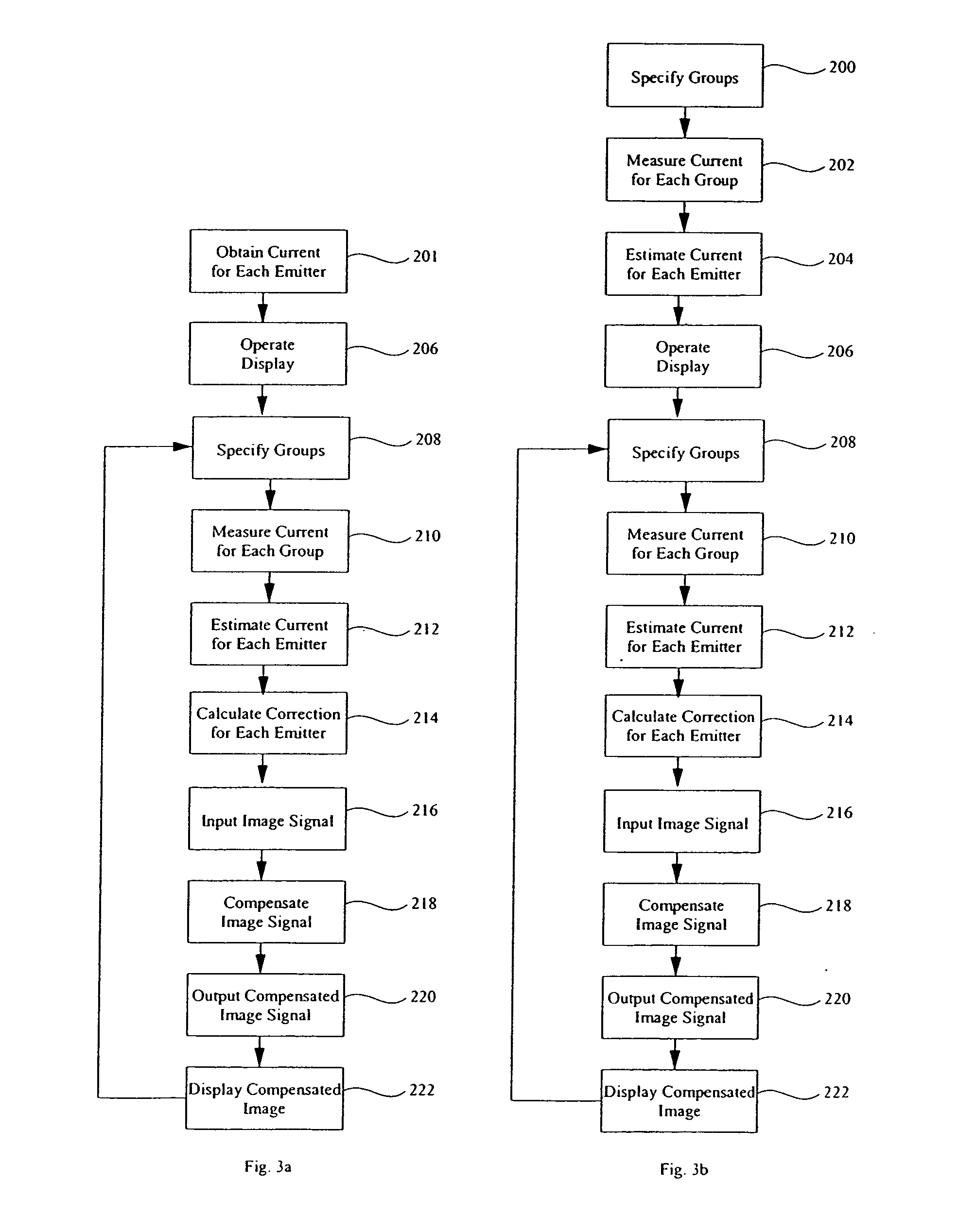OLED display with aging compensation
- Summary
- Abstract
- Description
- Claims
- Application Information
AI Technical Summary
Benefits of technology
Problems solved by technology
Method used
Image
Examples
Embodiment Construction
[0025] Referring to FIG. 1, an OLED display 10 system comprises a plurality of light-emitting elements 12 having outputs that change with time or use divided into two or more specified groups 24 and 26 wherein at least one light-emitting element is common to both groups 24 and 26. A current measuring device 14 senses the total current used by the display 10 at any given time when driven by a known image signal that causes the display 10 to illuminate the light-emitting elements 12 in one of the groups 24 or 26 to produce a total current signal 13. In a display calibration mode, controller 16 provides known image signals that activate all of the light-emitting elements 12 in each group 24 and 26. The controller 16 forms estimated values of current used by individual light-emitting elements in response to the total current signals 13, and stores at least one estimate of current used. By specifying groups containing at least one light-emitting element common to another specified group,...
PUM
 Login to View More
Login to View More Abstract
Description
Claims
Application Information
 Login to View More
Login to View More - R&D
- Intellectual Property
- Life Sciences
- Materials
- Tech Scout
- Unparalleled Data Quality
- Higher Quality Content
- 60% Fewer Hallucinations
Browse by: Latest US Patents, China's latest patents, Technical Efficacy Thesaurus, Application Domain, Technology Topic, Popular Technical Reports.
© 2025 PatSnap. All rights reserved.Legal|Privacy policy|Modern Slavery Act Transparency Statement|Sitemap|About US| Contact US: help@patsnap.com



